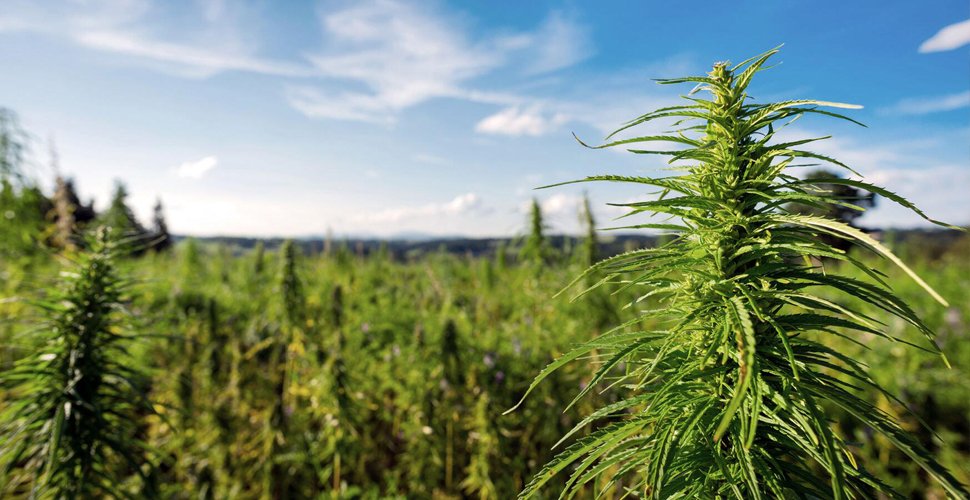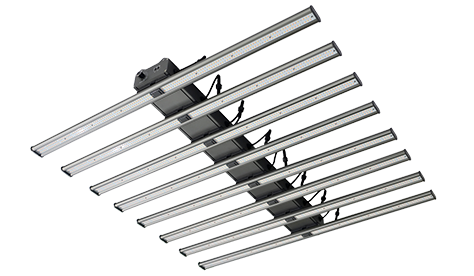Industrial hemp is a plant that is misunderstood in concept but has unlimited potential.
Industrial hemp has long been misperceived due to its association with the drug cannabis. Many people are unaware that industrial hemp itself is not equivalent to the drug.
Industrial hemp has wide and legal usage and is an essential raw material source for several industries.
It is a plant that has a long history and is still legally grown and used commercially. Its seeds and stalks can be used to make food, nutritional supplements, textiles, building materials, fuel, and even medicine.
However, misconceptions about its existence have prevented its proper recognition and exploration.
Keep reading and let’s get a fresh look at industrial hemp together. Learn how it works and what the future of it will be.
What is Industrial Hemp?
We’ve talked about how medical marijuana works before, and industrial hemp deserves a fresh look.
What Does Industrial Hemp Mean?
Industrial hemp is a non-toxic cannabis plant that belongs to a variety of the genus Cannabis.
Because it is obtained by selective breeding and cultivation of cannabis plant varieties with very low THC content, which usually does not exceed 0.3%. In other words, industrial hemp does not produce any hallucinogenic effects or toxicity.
The History of Industrial Hemp
Industrial hemp originated in Central Asia and has been cultivated for thousands of years.
Humans have been employing industrial hemp fibers since 2900 B.C., especially for the production of rope, canvas, clothing, and other items.
At present, industrial hemp and its derivatives are legally grown and sold in over 30 countries worldwide.
What is Industrial Hemp Used For?
Industrial hemp seeds, stalks, and fibers are used in textiles, food, healthcare, cosmetics, biofuels, construction, and industrial lubricants.
- Textile raw materials: Industrial hemp fibers can be used to produce canvas, hemp rope, hemp bags, hemp paper, etc. It can also be blended with cotton and other fibers to produce various hemp-cotton blended textiles.
- Edible food raw materials: Hemp seeds are rich in nutrients such as protein, and unsaturated fatty acids. They can be processed into hemp seed oil, hemp seed powder, and protein powder, which are widely used in the food industry to produce products such as chocolates, breads, cereals, energy bars, and seasonings.
- Functional foods and health care products: Hemp seeds are nutritious and have been widely used to produce various health foods and dietary supplements such as probiotics and omega fatty acid tablets. Hemp seed oil and proteins contain 8 essential amino acids that are beneficial to human health.
- Natural cosmetic raw materials: Hemp seed oil is rich in linoleic acid and gamma-linolenic acid, which is good for the skin. It has been widely used to produce various natural cosmetics and skin care products.
- Biomass fuel raw materials: Industrial hemp is rich in biomass and can be converted into bioethanol, biodiesel, and biomass fuel, which is a potential renewable energy resource.
- Building and insulation materials: Industrial hemp stalks and fibers can be processed into boards, powders, and cellulose fibers used in the building and furniture industries with heat insulation and sound insulation properties.
- Industrial lubricant raw materials: Hemp seed oil has antioxidant properties and can be used to produce biodegradable lubricating grease, hydraulic oil, and generator lubricating oil.

Is Industrial Hemp Hard to Grow?
In comparison to other crops, industrial hemp is not considered a difficult plant to grow.
It is a labor-intensive crop. Farmers need to be prepared to work long hours tending to the plants every day during the planting and harvesting seasons and throughout the growing season.
Advantages of Growing Industrial Hemp
- Short growth cycle. Industrial hemp is an annual plant. It can complete multiple growth cycles in a year, with a growth cycle of only 3-4 months. This is why it produces high-quality cellulose and seeds.
- Strong cold resistance. Industrial hemp is less sensitive to low temperatures and it can tolerate light frosts, which allows it to be grown widely in temperate and subtropical regions.
- Disease and insect resistance. Industrial hemp is highly resistant to common pests and diseases. It is less susceptible to serious damage from pests and diseases during growth, which helps to reduce the use of chemical pesticides.
- Environmental adaptation. Industrial hemp can be adapted to a variety of soils, does not require much moisture, and is easy to cultivate and manage.
- Extensive use. The seeds, culms, and fibers of industrial hemp have an important economic value and use. Therefore, the product is highly utilized, reducing production costs and increasing revenue.
Challenges of Growing Industrial Hemp
Industrial hemp cultivation is strictly regulated or prohibited in some countries or regions due to the long-standing negative perception of the presence of the cannabis plant.
Growing industrial hemp requires a certain level of expertise as well. Growers need to manage the plant precisely at all stages of their reproductive life otherwise the yield and quality will be affected.
In general, industrial hemp is easier to grow than other crops.
The factors that favor cultivation are the rapid growth, disease resistance, and wide adaptability of industrial hemp. The constraints, on the other hand, come mainly from the policy and technical aspects.
Methods for Growing Industrial Hemp
Both outdoor and indoor cultivation are the main methods of growing industrial hemp.
Open-field cultivation of industrial hemp is best in warm climates with fertile, well-drained soils.
It is also possible to grow industrial hemp indoors, which can be done on a large scale with manual control of light, temperature, humidity, and ventilation.
Growing indoors reduces the impact of climate change, resulting in higher yields and higher-quality products. However, indoor growing is more expensive. Not all growers are equipped to grow indoors.
The choice of method depends on the grower’s resources and the positioning of the product. Both methods require strict control and management of the entire process to obtain efficient production.

The Future of Industrial Hemp
The industrial hemp market scale is expanding, and the future development prospects are promising.
The global industrial hemp market size will grow from USD 4.2 billion in 2018 to USD 10.6 billion by 2025, at a CAGR of 20.5%.
Europe is the largest producer and consumer of industrial hemp in the world, accounting for 40% of the global market in 2018. China’s industrial hemp industry is also growing rapidly, with production increasing from 50,000 tons in 2000 to 300,000 tons in 2018, with an average annual growth rate of 17%.
Industrial hemp is being employed for various creative applications, with biomass fuels being a new growth sector.
Industrial hemp straw and fiber is a premium feedstock for bioethanol and biodiesel production.
In the field of construction, industrial hemp straw can be processed into durable building panels with good insulation properties. In the automotive field, industrial hemp fiber is being developed as a material for body light-weighting.
A ton of industrial hemp straw can be turned into 200 liters of bioethanol or 500 liters of biodiesel. The worldwide demand for biofuels is huge, creating an opportunity for industrial hemp development.
In 2018, the eco-friendly building materials market size reached USD 154 billion and is growing at a CAGR of 8.6%. Industrial hemp straw-based building panels are widely regarded as the new environmental-friendly building materials of the 21st century.
The market for eco-friendly building materials reached USD 154 billion in 2018 and is increasing at an 8.6% CAGR. Industrial hemp straw-based building panels are considered the 21st century’s new environmentally friendly building materials.
New technologies are emerging to suit market needs.
For example, breeding new varieties with high yield or improved characteristics by gene editing techniques. TRADCO has used gene editing technology to produce a hemp variety with a 50% higher fiber yield and less than 0.3% THC.
Using bioengineering techniques to extract high-value-added chemicals and bio-products from industrial hemp. Applying the latest extraction technologies to more efficiently extract nutrients from industrial hemp seeds, etc.
Anthropic develops engineered technologies to extract cannabinol and tetrahydrocannabinol from industrial hemp. These chemicals have important applications in the pharmaceutical and new energy sectors and greatly improve the utilization of nutrients from industrial hemp seeds.
However, there are some challenges to the future development of industrial hemp.
Only 33 countries and. 41 states legally farmed industrial hemp in 2018 due to governmental constraints. Because it is difficult to discern between industrial hemp and drug marijuana, many states incorporate both in the same regulatory setting
This leaves less than 2% of the potential capacity of industrial hemp under legal cultivation globally, and the market potential is not fully unlocked.
Conclusie
Well, at this time you should be aware that industrial hemp is a non-toxic cannabis plant and an emerging crop with a wide range of uses and great potential.
As the global concern for environmentally friendly and healthy products increases, combined with technological advances, industrial hemp will be used in a wider range of areas.
The versatility and environmental friendliness of industrial hemp have made it an emerging “green raw material” for the food, textile, and energy industries.
However, the industrial hemp market faces both opportunities and challenges in terms of policy, technology, and perception.
If you are watching the industrial hemp market or want to invest in growing cannabis indoors, feel free to contact us. Auxgrow is here to support you with indoor growing equipment.
Jayes
Als Digital Marketing Manager bij AUXGROW combineert Jayes een passie voor hydrocultuursystemen en expertise in LED-groeilampen. Met praktijkervaring en diepgaand inzicht begeleidt Jayes u door de wereld van duurzame teelt.






